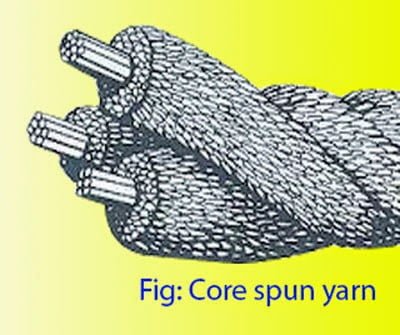Thread Fibers
- Soft, warm, absorbent, dyes well
- Shrinks with high heat no "give," deteriorates over time
- Extra Long Staple sews best
- Properties vary depending on the "finish"
- Highly elastic with good recovery, won't shrink, strong
- Not coor-fast, will melt under low hear if not 'bonded"
- Long-lasting, strong, and inexpensive
- Withstand moderate heat, won't shrink, minimal "give"
- Not as soft as cotton or silk, less absorbent than cotton
- High shine, dyes beautifully, fade-resistant, highthighlyrbent
- Weak, not ideal for seam construction
- Best used for decorative stitching and embroidery
- Fine, flexible, strong, good elasticity, lint-free
- Dyes well, color-fast
- Great for hand-sewing and fine tailoring, expensive
- Soft, durable, warm
- Wicks away moisture
- Beautiful texture, dyes well, good elasticity, will shrink and loses strength when wet
Thread Make-Up
Ply: This is a strand of yarn. You'll often see threads described as 2-, 3-, and 4-. The above image depicts a 3-ply thread.

Core spun yarn/thread: This type of thread is composed of a "core" of continuous filament polyester that is wrapped with either cotton or polyester yarn, like a cocoon. These combined threads provide qualities from both fibers, with the outer fiber providing the finished "look." For instance, a polyester core with wrapped cotton has the strength of polyester, but the finished look of soft cotton. This creates a stronger, more durable thread. You commonly see this type of thread used in the construction of Jeans.

Corded Thread: When multiple "threads" are twisted together, they create a "corded thread." These are commonly described as 4-, 6-, and 9-ply threads. As you can imagine, a corded thread will be stronger and thicker. You commonly see this used in leatherwork, shoe-making, etc.

Thread Twist: The direction the thread is spun defines its twist. It can either be twisted in a 'Z'direction (left twist) or an 'S' direction (right twist). A 'Z' twist is suitable for single-needle sewing machines. An 'S' twist thread isn't commonly used in home sewing machines.
